We all have gaps in our pop culture knowledge, those omissions that elicit gasps from our fellow funnybook connoisseurs. For me, those gaps are vast and constitute anything outside of DC Comics proper. I’m on a mission to rectify my comics knowledge shortcomings and to provide a fresh take on classic stories that others have known for years. The comics may be old but my mind is still fresh, wrapped in plastic and sitting on the shelf, waiting to be opened. Welcome to Mint Condition!
This time: Well this column got dark quickly. Sit back and enjoy the gory tale of Jack the Ripper killing prostitutes in Alan Moore and Eddie Campbell’s From Hell.
BACKGROUND
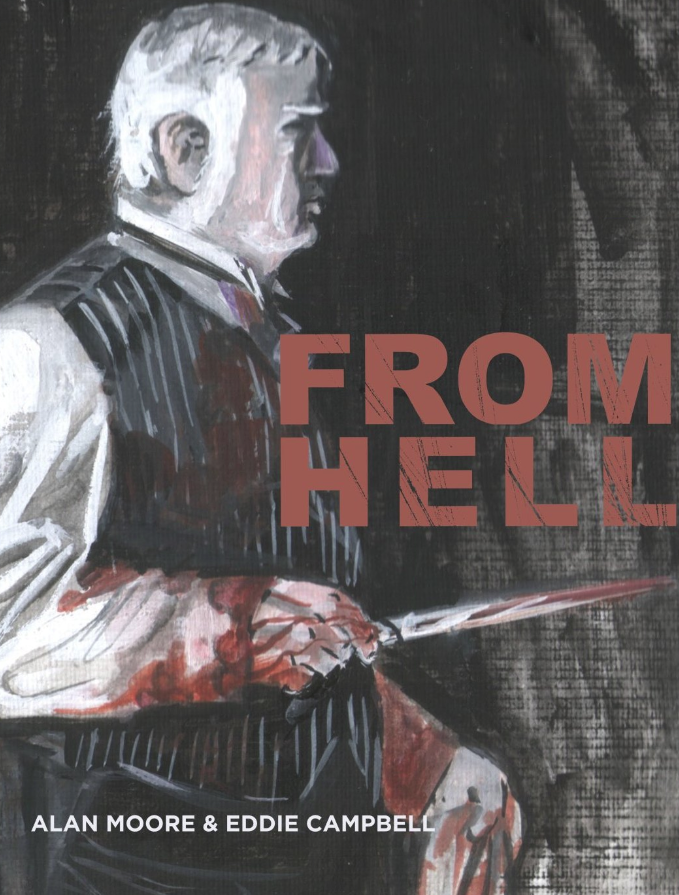
Issues read: The whole enchilada. The book (collected edition) is divided into fourteen chapters, plus a prologue, an epilogue, and appendices. All told, it’s nearly 600 pages of good clean family fun. Aside from all the murdered prostitutes, obviously.
Published by: Like its female protagonists, this book gets around. The first few issues were published serially in the horror anthology comic Taboo (1989-1992), which was run by Moore’s Swamp Thing collaborator Steve Bissette through his Spiderbaby Grafix imprint. After the final issue of the anthology, From Hell hopped over to Tundra Publishing, TMNT co-creator Kevin Eastman’s doomed startup, and ran as a standalone series (1991-1993). When Tundra folded, it was bought out by Kitchen Sink Press and the book continued on to completion (1993-1998). Collected editions have been put together by Eddie Campbell himself, and more recently by IDW’s Top Shelf Productions. Note that Top Shelf is currently releasing a “master edition” of the comic that is in color (the original’s not) and moderately reworked by the artist himself, so know which edition you’re buying. I have some thoughts on that in the Art section below.
Publication dates: I pretty much covered it in the previous section. The original serial story started in 1989 and wrapped in 1996. A lengthy appendix with annotations, history lessons, and final thoughts from the author was released in 1998 and is included in the back of the collected editions. It’s worth a read for sure.
Creators: Alan Moore wrote it, Eddie Campbell drew it.
My previous experience: I’d heard of this book plenty, with high praise, but honestly didn’t know that it was about Jack the Ripper. Or that it was black and white. I was expecting something closer to, oh, Swamp Thing or Promethea. Imagine my surprise.
FIRST IMPRESSIONS
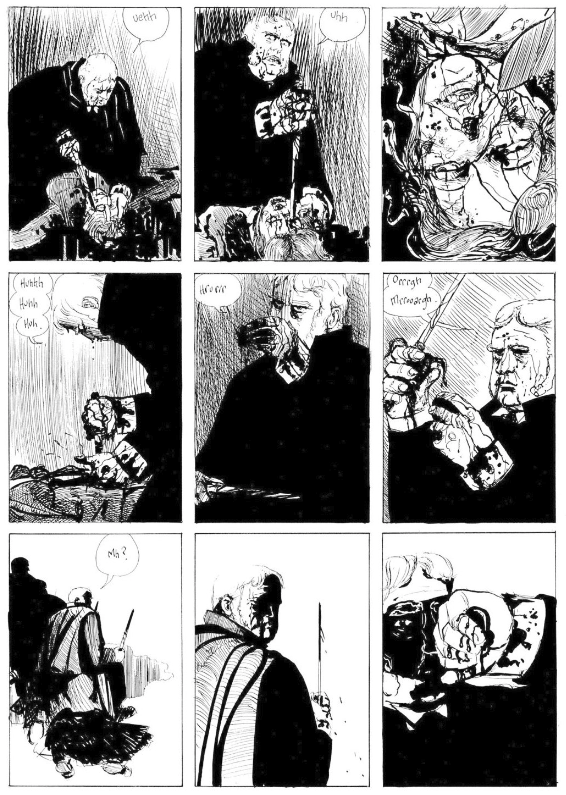
But it makes sense, too. Moore was born less than 100 miles from Whitechapel, raised in the same poverty and base circumstances that he portrays so vividly in this book. He has a clear fascination with England, which he uses as setting in several works like V for Vendetta and League of Extraordinary Gentlemen. They say to write what you know, and he probably knows something about destitute wives doing whatever they can to survive or about the strong preying on the unlucky and desperate. So okay, if this is the story he has to tell then I can set aside my expectations and let myself be led into this world.
The setting is late 19th century London, the world’s largest city, in the overcrowded and unsanitary slums. Several of the prominent characters are women who walk the streets late at night trying to sell their bodies in order to afford a room. Following these women day to day, as they squat over their chamber pots in squalid rooms and share sad stories in a grimy pub, instills a real sense of inhabiting their bleak world.
One of the deepest impressions From Hell imparts is its sense of sacred geography. Histories of places are hinted at in passing. The names of certain roads and buildings pop up just enough times that they take on a notion of having dark import. My favorite chapter is one in which almost nothing notable happens to advance the story, as two characters go on a tour of London’s streets. Moore’s knowledge of London’s history and architecture is on display here and he weaves a nearly believable story of magic in the steeples and an ancient battle between sun and moon.
This is not particularly a murder mystery. The main character WIlliam Gull is Moore’s killer, telegraphed from his first appearance as a strange child who enjoys dissecting field mice. The reader is not asked to piece together any clues, but merely to observe the man’s life and to discover what drove him to such heinous acts. Gull is an exceptional young man who becomes an extraordinary older gentleman — blessed with a sharp intelligence and a visceral appreciation for life, obsessed with blood and anatomy and time. As his actions become more grievous with each chapter, I still found I could faintly sympathize with his views while recognizing him as a monster.
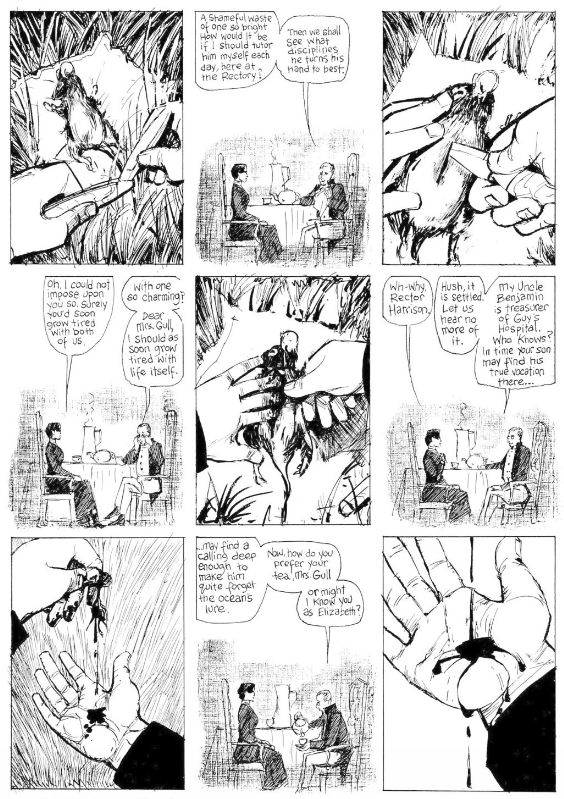
Oh, and then the time travel starts.
You didn’t think an Alan Moore story would be that straightforward, did you? After William Gull has an encounter with God (Who is all gods in one) he uses the murders as a kind of ritual to elevate his consciousness, to break into the fourth dimension for a momentary glimpse of the century to come. And what does he see there, but us! In what he assumes is an endtime revelation much like John’s in the Bible, he is transported into a current day office environment…and is completely disgusted with what we’ve become. It’s a scathing indictment of modern culture as only Alan Moore could deliver, noting from an outside perspective how dull and listless we’ve allowed ourselves to become while surrounded by a world full of wonders. He’s not half wrong.
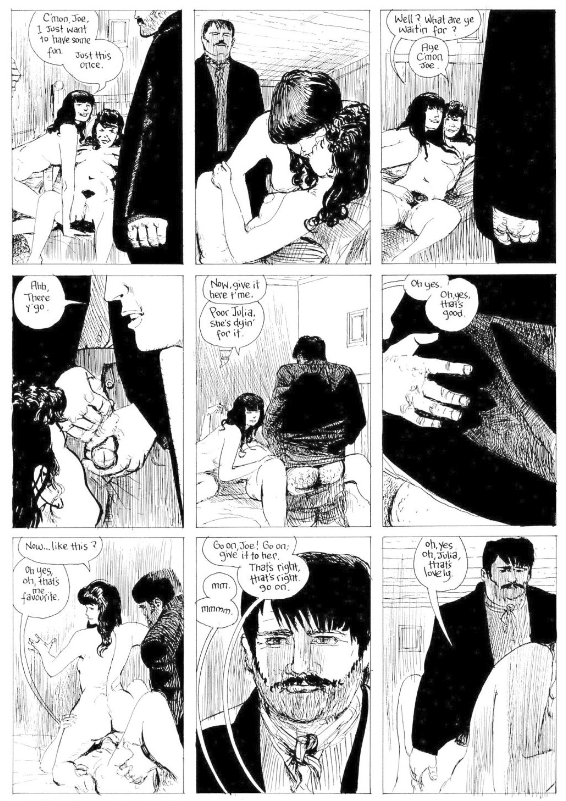
I’m unfamiliar with Eddie Campbell outside of this work. I don’t recognize any of the other books he’s drawn (which basically means they aren’t in the DC Universe). I think From Hell is a magnificent work of art.
Campbell’s style is sketchy with lots of line work, mostly short straight strokes. His perspective is impeccably precise. In many panels, severe areas of pure black abut wide swathes of pure white. The effect is one of harsh, gritty reality. Campbell makes an exception in chapter 5 where we see the contrast between Gull’s cozy life of wealth and Polly’s working-class squalor. The panels that show Gull are blended, hazy, dispersed. He lives in a different world than the women he will later sacrifice.
The art’s tone heavily emphasizes the environment around the characters. It often feels as though the background and scenery are the important elements of the page and the characters just happen to inhabit it. The background’s shading sometimes invades and overlaps the foreground so that characters blend into the setting. There is more of a focus on movement and action than on detailed portrayals of faces and personal definition. This isn’t to say that characters are drawn sloppily or poorly — Campbell clearly understands figures and faces. His technical skills are never in question, and the choices he makes serve the book very well.

Eddie Campbell has recently been reworking the book to add color in a new edition (a few issues have already been released). Frankly, I don’t care for it. I feel there’s something of the original magic that is lost by introducing the contrast of the different hues. Make mine bleak and scratchy, with trails of dark black blood.
VERDICT
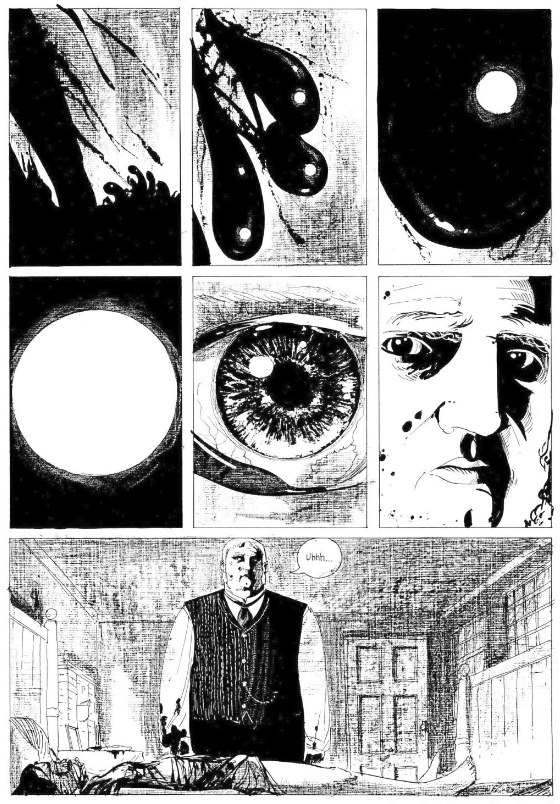
Desire to read more: Desire to be hugged and told I’m okay. Once that’s done…sure. There’s nothing more to this series, but I’m a solid Alan Moore fan. There are some serious themes and weighty concepts in From Hell, as in all of Moore’s work. It’s what keeps me coming back. He obviously has a wide exposure to Eastern medicine, archetypal myths, fringe sciences, and altered states of consciousness. And yes, a touch of the lunacy that marks all great thinkers. It’s clear that he’s not just writing stories to entertain, but to communicate what he sees as deep truths. And it’s totally my jam.
Final Thoughts: Maybe don’t recommend this to your mother, but definitely give it a read yourself. It’s an intimately touching story of those who don’t dare dream of getting ahead in this life and of one who is doggedly determined to transcend it.
Suggestions for future columns? Leave them in the comments. And check out the full Mint Condition archive here!



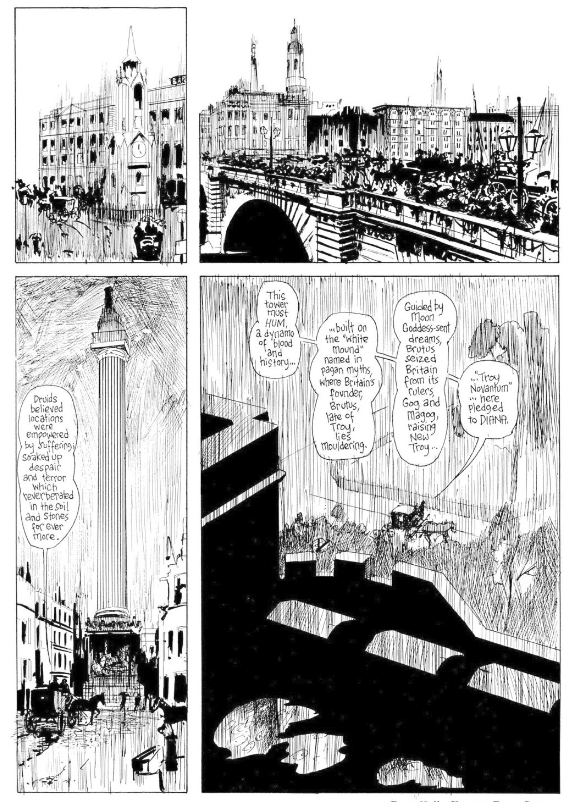
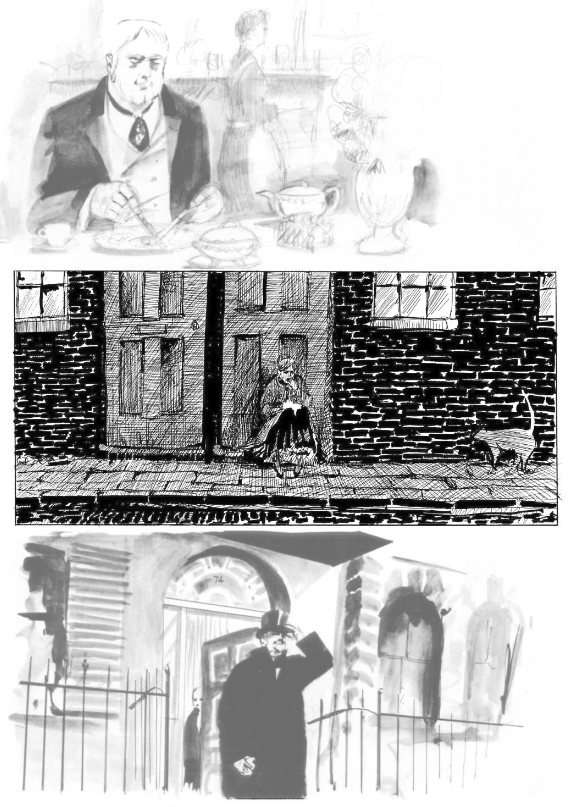

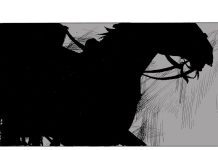







Thanks for the great breakdown! I think I’ll have to grab this off my shelf and read it again soon.
100 miles is a much longer distance in Britain. Moore isn’t a Londoner, and would be offended if you implied it.
Comments are closed.